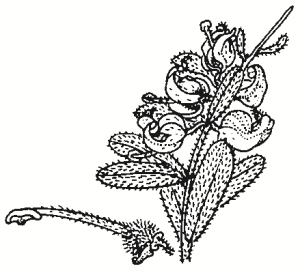Family:
Proteaceae
Grevillea alpina
Cat’s Claws Grevillea
Other Names: Mountain Grevillea, Alpine Grevillea, Goldfields Grevillea.
First Nations Name(s):

Name Origin:
Grevillea — after Charles Francis Greville (1749-1809), co-founder of London Horticultural Society.
alpina — from Latin alpinus, alpine, referring to habitat of some provenances (localities).
Regional Subspecies:
Occurrence:
Regional:
Noted only in Albury district.
Australia:
NSW, Vic.
Habitat:
Dry sclerophyll forest or woodland, heath or mallee. Usually on sandy soil.
Habit:
Spreading to semi-prostrate shrub 30 cm to 2 m high, with grey-green foliage.
Site Preference:
Well-drained soil. Tolerates frost and extended dry periods.
Characteristics:
Can be long-lived.
Flowering:
Bright red and yellow, mainly winter-spring.
Seed Collection:
Early Dec to late Feb. Monitor closely as seeds shed immediately or 1-2 days after maturity.
Long season. Profuse and conspicuous.
Propagation:
From cuttings of fresh new growth, 5-7 cm long, or from seed. Rooting hormones should improve strike rate.
Regeneration:
From seed. Some provenances sucker.
VALUES:
Shade & Shelter:
Useful low-level cover in windbreaks.
Wildlife:
Excellent habitat. Flowers are a nectar-source for native birds, particularly honeyeaters such as the Eastern Spinebill. Many native moths and butterflies attracted. Foliage provides nesting sites for small birds including the Yellow-tufted Honeyeater.
Ornamental:
Attractive, popular ornamental for gardens and tubs. Prune to encourage bushiness.
